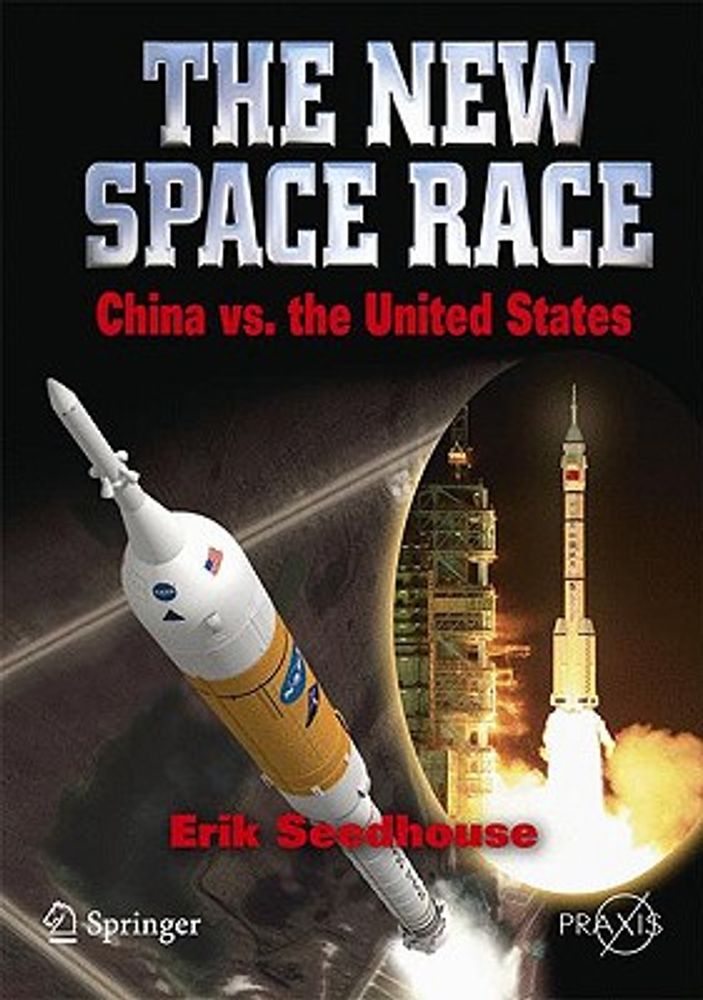Home
The New Space Race: China vs. USA
Loading Inventory...
Barbara's Bookstore
The New Space Race: China vs. USA
From Erik Seedhouse
Current price: $39.99


Barbara's Bookstore
The New Space Race: China vs. USA
From Erik Seedhouse
Current price: $39.99
Loading Inventory...
*Product Information may vary - to confirm product availability, pricing, and additional information please contact Barbara's Bookstore
The world s most populous nation views space as an asset, not only from a technological and commercial perspective, but also from a political and militaristic one. The repercussions of this ideology already extend far beyond Washington. China vs. United States offers a glimpse of future Chinese aspirations in space and the politico-militaristic implications of a looming space race, and explains why an interplanetary spaceship called the Tsien Hsue Shen might one day travel to the outer planets.
Until China successfully launched taikonauts into orbit, China s space program had attracted little international attention. The book opens with an analysis of the short fifteen-year history of the China National Space Administration and its long list of accomplishments. Chapter 2 assesses Sino-U.S. technological and commercial interests in space and their implications in fuelling a potential space race. The national security objectives of the U.S. and China are examined, showing how their intentions are increasingly leading to the military integration of space technologies. Chapter 3 describes China s anxieties about U.S. space power, its obsession with national prestige, and how manned spaceflight is viewed as a crucial element to sustain the legitimacy of the Communist Party. China is currently focusing on similar goals to those of NASA s Constellation Program - lunar and Mars exploration. The following chapter examines the ambitious plans of both nations, and evaluates whether China s bold goal of landing taikonauts on the Moon by 2020 is matched by the necessary capability.
In Chapter 5 Dr Seedhouse describes the space hardware being developed by the U.S. and China and the strides taken by China in its attempt to match the technological capability of the U.S. The following chapter provides an overview of China s introductory manned spaceflights and shows how, despite a lack of experience, the Chinese may soon be in a position to challenge the U.S. in a race to the Moon. In Chapter 7, the author discusses how China s manned space program can boost the country s international prestige and also examines the notion of manned spaceflight as a risky way to boost national status and the potential implications of a disaster akin to Challenger and Columbia.
Chapter 8 addresses the questions of alliances and cooperation between NASA and ESA and China and Russia, or, alternatively, the U.S. and China pursuing their space ambitions alone. The implications of each way forward in the context of a looming competition in space are considered. Chapter 9 discusses the repercussions of a Chinese space program overtaking NASA and whether the U.S. has the political will to advance its own space program to prevent its position as sole space superpower being usurped. Given the mutual suspicions existing in both countries, it is perhaps inevitable that Washington and Beijing are on a collision course in space. The final chapter describes the implications of such a confrontation and discusses what, if anything, can be done to avert a new space race.
Dr. Erik Seedhouse is eminently qualified to write this informative handbook for all potential spaceflight participants. He was an Astronaut Training Consultant and wrote the Spaceflight Participants Flight Surgeona (TM)s Manual for Bigelow Aerospace in 2005. He also developed astronaut training protocols for future spaceflight participants and wrote and edited several chapters of Bigelow Aerospacea (TM)s Astronaut Training Manual. He has written many technical and scientific articles as well as articles for Spaceflight magazine. Erik Seedhouse is a research scientist specializing in environmental life sciences and physiology, for which he obtained his Ph.D. in Physiology while working for the European Space Agency between 1996 and 1998.
Aeronautics & Astronautics
Physics - Astrophysics









